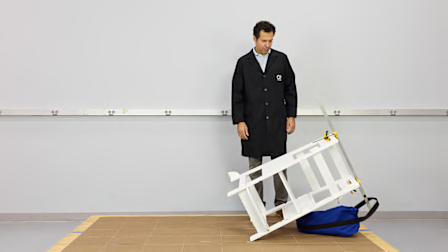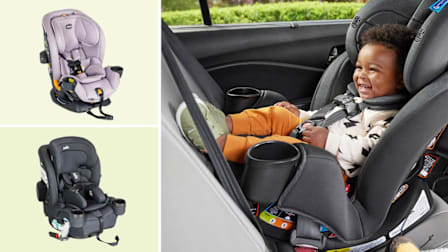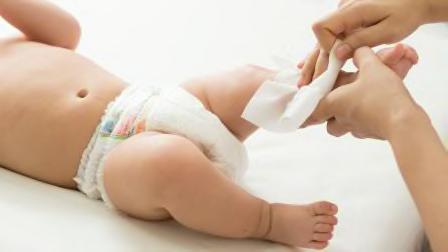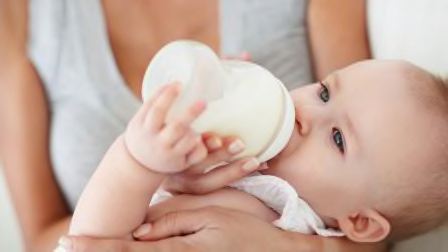Is It Okay for Babies to Sleep in a Car Seat?
News about the risks of letting babies sleep on an incline may make you wonder about car seats. Here's what you need to know.
The danger of letting infants sleep on an incline has become more apparent in recent years. In 2022, in fact, a new law—the Safe Sleep for Babies Act—banned infant reclined sleepers, such as the Fisher-Price Rock ’n Play Sleeper. A Consumer Reports investigation had previously linked sleepers like that to dozens of deaths. That may make you wonder whether it’s okay for babies to sleep in a car seat because the seat also positions babies at an incline.
The answer is yes, you can let your baby sleep for short stretches in a car seat as long as it’s used properly, says Emily A. Thomas, PhD, manager of auto safety at CR’s Auto Test Center who is also a specialist in pediatric injury biomechanics and a certified child passenger safety technician. Here’s what you need to know.
First, car seats are essential to keep children safe when traveling in vehicles. The angle of rear-facing car seats (the kind for infants) has been tested extensively and is necessary to protect a baby’s head and spine in a collision. “While the risks of sleeping on an incline are real and serious, they are vastly outweighed by the protection a well-designed and properly installed car seat offers during a crash,” Thomas says.
Second, car seats—even those that you can remove from a vehicle to lock into a stroller—are meant to be used only while you’re with your baby and observing them, not for extended or overnight sleep.
Lastly, infant car seats are designed to include a five-point harness system, which is key to maintaining proper and safe positioning. Infants don’t yet have the neck or torso strength to keep their head up and prevent slouching. “Infant car seats have been designed and tested not only to protect your baby in a collision but also to ensure that if your baby does fall asleep in the seat, the risks of slumping down, chin to chest and blocking airflow, are low,” Thomas says. “Still, car seats aren’t appropriate for extended, unobserved sleep.”
Install the Car Seat Correctly
The American Academy of Pediatrics recommends that children ride rear-facing (in either an infant seat or a convertible seat) until at least age 2, or as long as they fit the height and weight restrictions of the car seat. All rear-facing seats are designed to be installed at a 30- to 45-degree angle, depending on the particular seat.
“Most manufacturers either provide a line on a label or a bubble indicator to show you how to position the car seat at the appropriate angle,” says Sarah Haverstick, manager of safety advocacy and a child passenger safety technician instructor for Evenflo, which makes baby products such as car seats and strollers. “Make sure that you’re installing the product according to that manufacturer’s instructions—which include age and weight requirements—because that’s how the seat was crash-tested and that’s the angle that’s safe for most typically developing infants.”
Use Only an Approved Positioner
If you want to use an infant positioner in the car seat—for example, if your infant isn’t big enough to fit ideally in the seat—“only use what is approved for and provided by your car-seat manufacturer,” Haverstick says. “If the car seat came with a head pillow and an infant insert, that means that car-seat manufacturer has crash-tested that product with those materials. Using a positioner that’s never been tested by the manufacturer means we don’t know what could happen in a crash,” or whether the baby’s head will be properly supported for airflow, she says.
Also be aware that positioners are meant to be used only for infants up to a particular weight and height. So read the instructions carefully so that you know when you’re supposed to remove the positioning accessories from the car seat.
Buckle Up the 5-Point Harness System
Buckle your child into the harness—with a snug fit—whenever he or she is in the car seat. The five-point restraint system keeps infants secure during a crash. And even during an uneventful drive, it prevents babies from sliding down, squirming out of the seat, or rolling over into the car seat’s fabric, all of which could lead to suffocation.
Watch Your Baby Carefully
Keep in mind that car seats are designed to be used with adult supervision, so even when your baby is appropriately positioned in one, check regularly. It’s particularly important when on long drives to stop periodically to give your baby the opportunity to get out and move around, says Jennifer Stockburger, director of operations and head of CR’s car-seat testing program at its Auto Test Center.
Use the Car Seat With Its Approved Stroller
Many infant car seats are designed to be used with a stroller base that locks the car seat into place. This allows parents to transfer a sleeping baby directly from a vehicle to the stroller travel system without removing the baby from the car seat or carrier. If you plan to do this, make sure the stroller base you have is designed for your car seat, and don’t leave your baby unattended in the travel system, Thomas says.
It might be tempting to loosen the car seat’s harness straps or unfasten one of the buckles to give your baby a little more room to move around when not riding in the car. But never do this because it increases the chance that they could slump down in the seat and cut off airflow, or wiggle around and get entangled in the harness straps. “Babies can be strangled in loose or partially buckled harness straps,” Thomas says.
Don’t Use a Seat Outside of the Car or Stroller
“Once you remove the car seat from the car or stroller base, and it is not being used the way it was originally designed, the risk of respiratory issues and other problems increase,” Hoffman says.
For instance, if you’re transferring your sleeping baby from a car into your home, it’s okay to briefly place the car seat on the ground. But don’t put it on a high surface like a countertop or a soft surface like a bed or couch. Even an infant strapped into the harness can move slightly and tip the balance of the car seat so that it falls to the floor or topples over onto a soft surface that blocks the baby from breathing. An unbalanced seat can also allow the baby’s head to fall forward and obstruct his or her airway.
“When you get to your final destination, if the baby is still sleeping, the best thing to do is to fully remove the child from the car seat and put him or her into a safe sleep environment, such as a firm, flat crib or bassinet,” Haverstick says.
In other words, car seats are safe for travel, not prolonged sleep. Parents and caregivers should feel confident that using an infant car seat is essential in a car, but a baby shouldn’t be left unattended in a car seat, and it shouldn’t be your baby’s primary sleeping place, Thomas says. Neither a car seat nor an inclined sleeper is an appropriate substitute for a crib or bassinet.

















